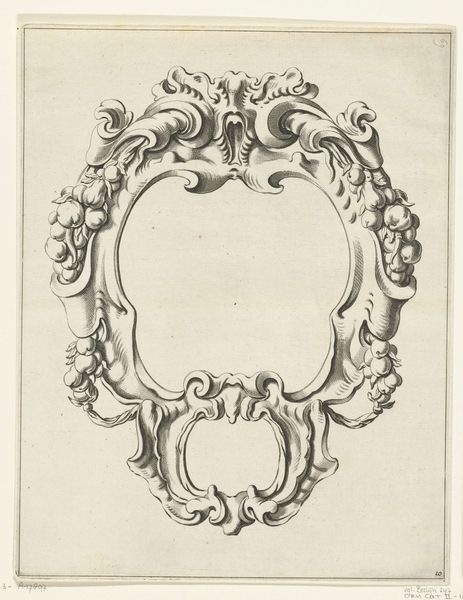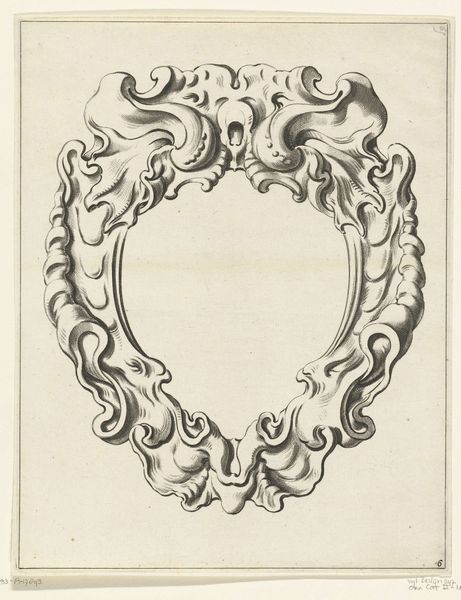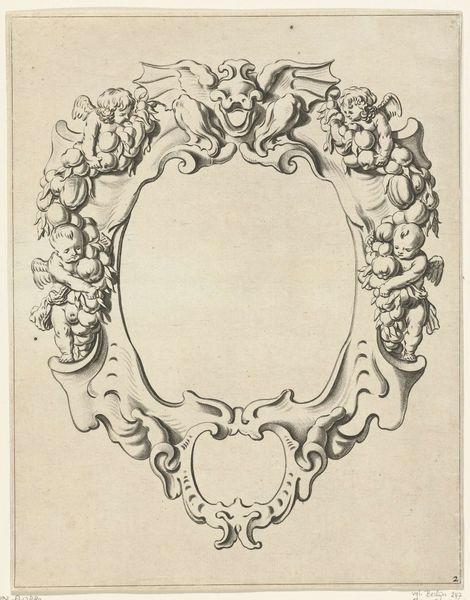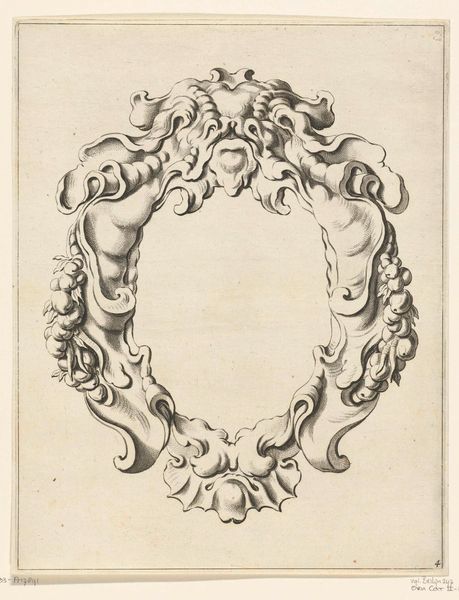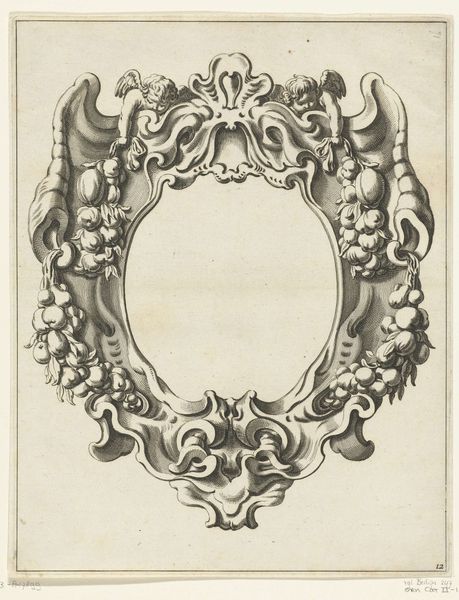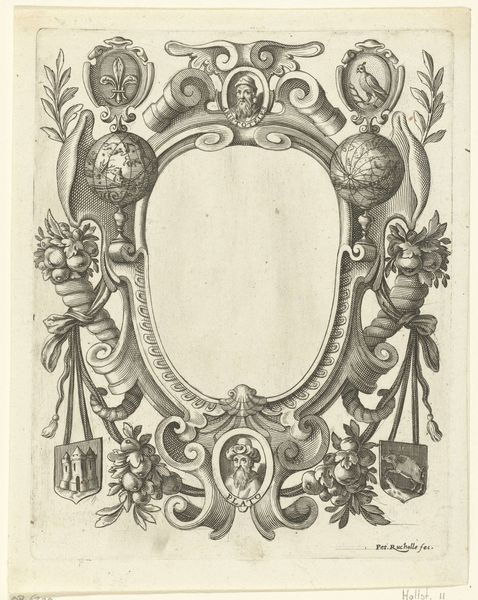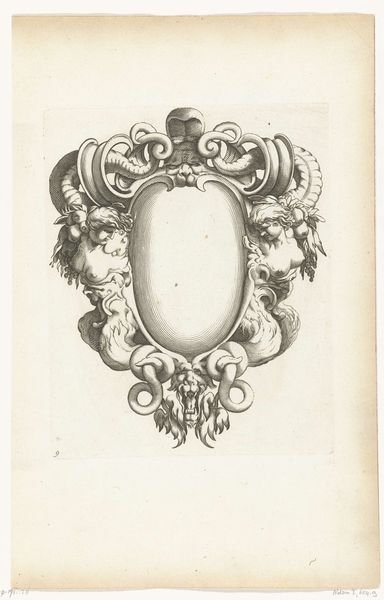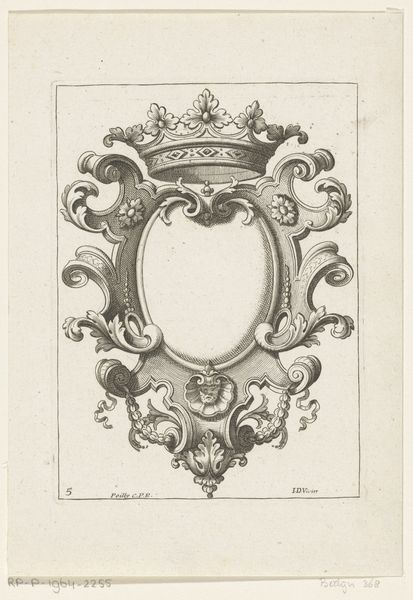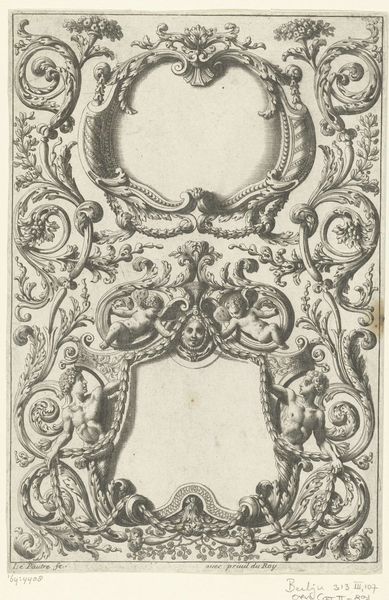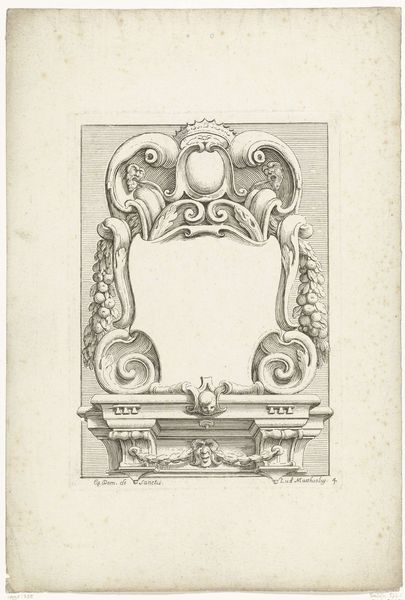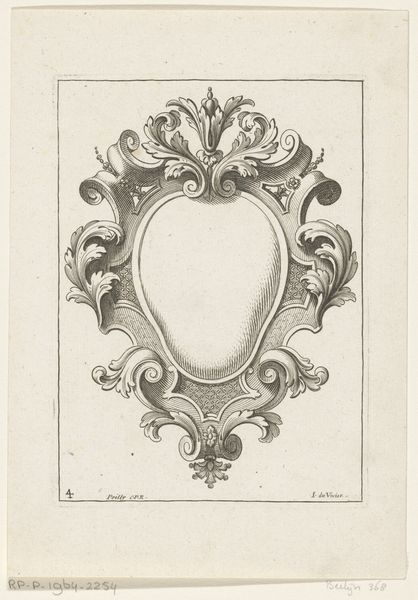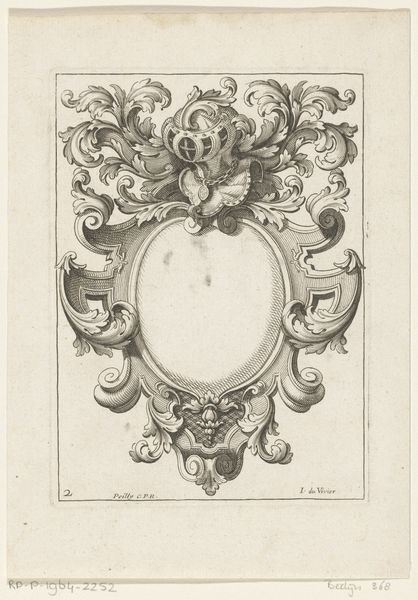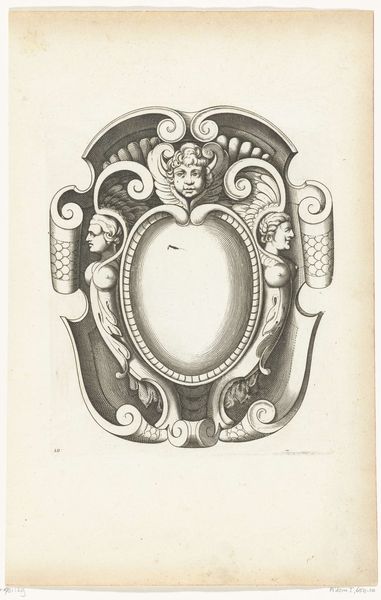
Cartouche met kwabornament met twee kinderen en twee engelen 1655
0:00
0:00
pieterhendrickszschut
Rijksmuseum
drawing, ornament, print, engraving
#
drawing
#
ornament
#
baroque
# print
#
figuration
#
history-painting
#
engraving
Dimensions: height 252 mm, width 197 mm
Copyright: Rijks Museum: Open Domain
Curator: Before us, we have Pieter Hendricksz. Schut's "Cartouche met kwabornament met twee kinderen en twee engelen," an engraving dating back to 1655. Editor: It has a very light and airy quality to it, almost like observing a ghostly echo. The symmetry, though, gives it structure. I would be keen to understand its cultural significance. Curator: Schut, active in the mid-17th century, was deeply embedded in the printmaking culture of the Dutch Golden Age. Prints were more than just art; they were a form of social currency. This specific print is particularly fascinating because it gives us access to the material culture of the Baroque period. Look at the labor implied by this ornamental work and imagine the artisan responsible. Editor: Exactly. I wonder about the cultural codes embedded in this piece. What did this type of imagery signify to the people of the time? Angels and children suggest innocence and divine favor, perhaps adorning spaces of privilege. Did these cartouches normalize hierarchical social roles or comment on it? Was there some subtle subversion? The labor of production would have reinforced social hierarchies. Curator: The function, I think, would give clues. Given it's an ornament it points toward both private devotion and civic display. It’s a statement, yes, of piety but also a projection of a certain level of mercantile success needed to display such things. This also gives clues to what it might be made of. The print shows clear intention for a more physically hefty or weighty material like stone. Editor: We also see the confluence of religious and aesthetic values in this work, reflecting the Dutch Republic’s complex relationship with the Reformation and its impact on artistic production. It certainly prompts reflections on the value systems embedded in this type of art and its circulation through printmaking. Curator: Considering that it’s an engraving makes me wonder what kind of inks would have been used and how this could impact how well this would have aged in this location across a variety of homes. It is exciting to see how an object made such a long time ago holds space and context for our present thinking. Editor: Agreed. It's precisely in questioning these historical narratives that art continues to challenge and expand our understanding.
Comments
No comments
Be the first to comment and join the conversation on the ultimate creative platform.
